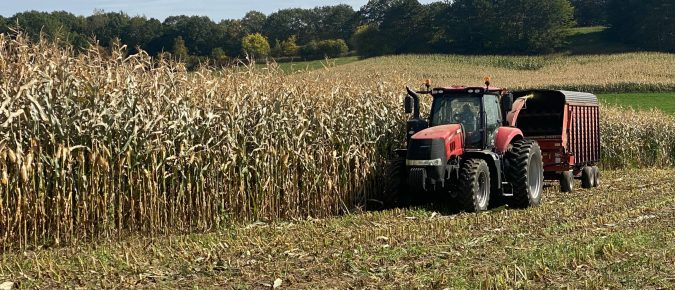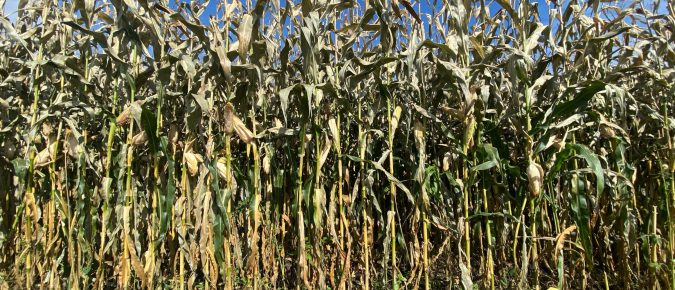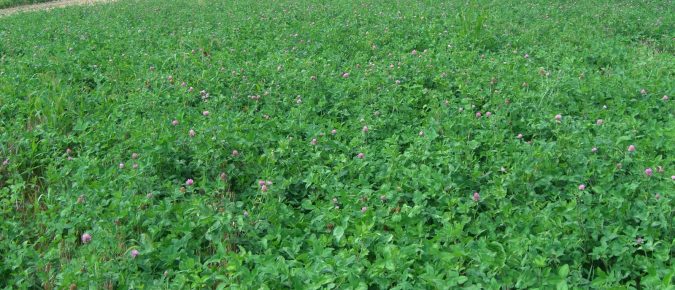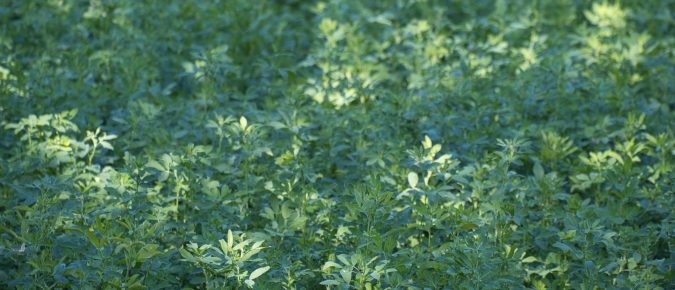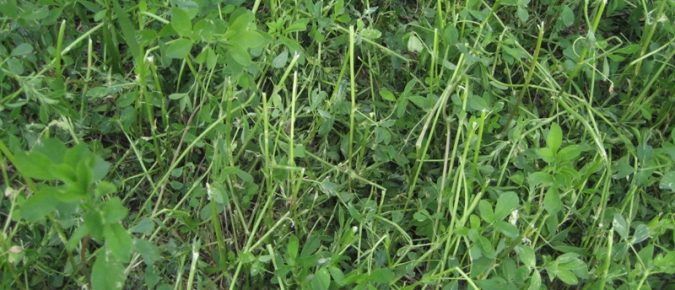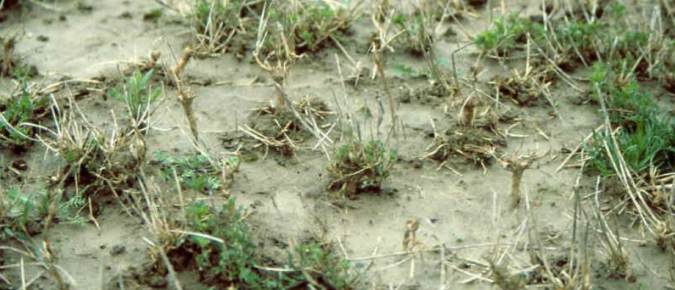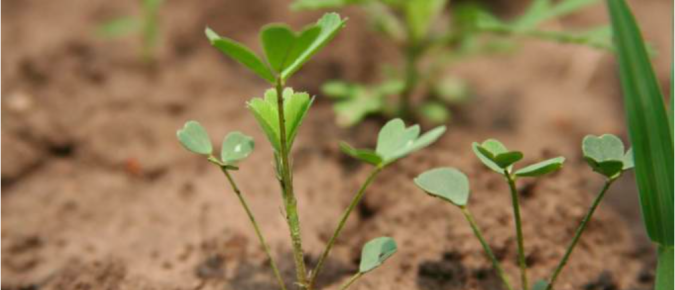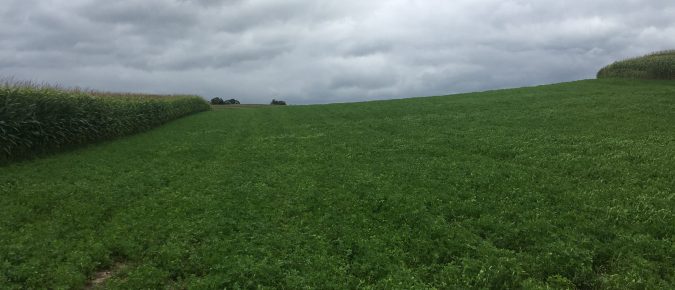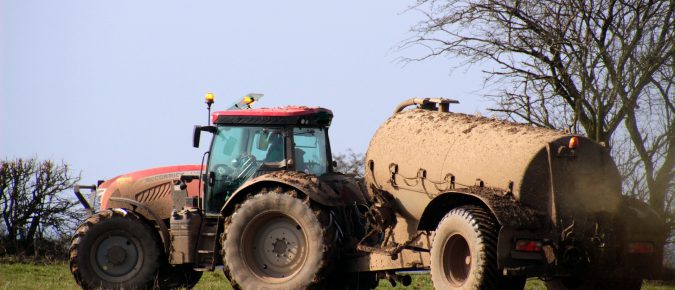Most dairy farmers do not have a drive-over scale available on their farms. Frequently it would be useful to know the weight of forage harvested from a field. Measuring alfalfa or corn silage yield is necessary to adjust management practices, to maintain crop inventories, and for crop reporting purposes.
What happens to corn silage yield and quality with later planting dates? The following is a summary of planting date trials conducted at Arlington, WI. The objective of these trials is to measure the impact of planting date on corn forage yield and quality.
Weed suppression can be important during alfalfa establishment as weeds can reduce stand life, alfalfa biomass, and forage quality. To reduce these impacts producers commonly apply herbicides to establishing alfalfa.
Alfalfa stands are typically terminated by herbicides in Wisconsin. While many options are available, combinations of 2,4-D and glyphosate are most commonly used.
Research is developing new understanding of forage, fiber, and the animal’s ability to use them. We have also increased understanding of the genetics of alfalfa to allow improved variety selection methods and enhanced performance for the farmer. This paper will consider both topics. Growing Alfalfa/Grass Mixtures Generally dairymen have perceived grasses to be too high […]
Current recommendations regarding cutting height of alfalfa are designed to maximize yield while maintaining high quality forages and stand longevity. Forage growers frequently cut forages at a height of 3-inches or more. However, recent reports indicate that there may be an advantage to cutting alfalfa closer, leaving an inch or less of stubble height (@griculture […]
Heaving is a problem in some alfalfa stands each year in the Midwest. Heaving occurs on heavy soils that have high moisture contents. Repeated freezing and thawing causes soil expansion and contraction that pushes the tap-rooted plants (and fence posts) out of the soil. The need to push against something is why grasses with fibrous […]
Shorter rotations mean greater profit per acre for the entire farm because of higher alfalfa yield, higher forage quality, reduced pesticide use, greater nitrogen credits, and increased corn yields. Alfalfa is a major profit center on most dairy farms.
Virtually everyone who has applied their trade as an alfalfa researcher has done a seeding rate study at some point in their career. The scientific literature is full of such studies and most come to the same conclusion: very little of what we dump in the drill ends up as a productive alfalfa plant that lives to see the next presidential election. It’s not anyone’s fault, but rather that inefficiency is a part of the deal. However, there should be some consideration given to cutting losses simply because input costs, including seed, are not getting any cheaper.
Weekly Scouting – 20 sweeps at 5 locations in each alfalfa field. Because leafhopper population densities vary from year to year and from field to field, the only way to accurately determine damage potential is by monitoring fields on a weekly schedule.
Beginning in 2007, Wisconsin has a new lime recommendation program. Will this increase or decrease the lime rates that are being recommended? Neither. In some cases the recommendations may be a bit lower and in some cases higher, but the new system will more accurately assess the level of acidity in the soil and lead […]
Manure has traditionally been targeted for corn acres during the course of a crop rotation. The reason has simply been that corn uses and needs all of the nutrients supplied by manure (especially nitrogen).

